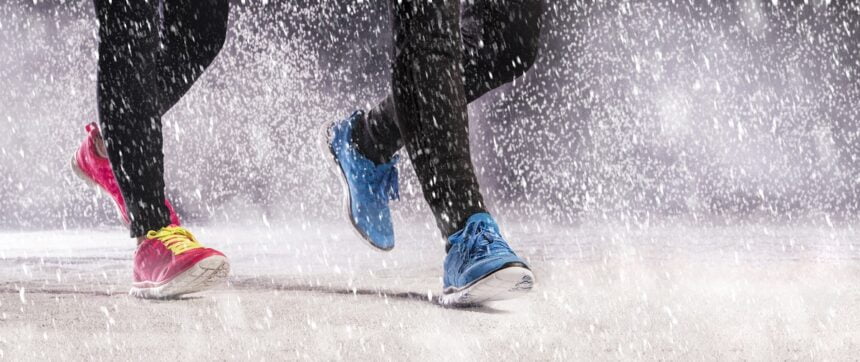While it’s extremely important to take care of your feet, it’s even more important when during the winter chill. Not only can many issues pop up, but existing issues can become worse. There are many different foot issues that can happen in the winter, as told by professionals like Gotham Footcare, but there are some that are more common. With that being the case, here are 5 of the most common foot issues to watch out for this winter.
- Blisters
An issue that the majority of people end up getting in the wintertime are blisters. Not only are these painful, but they can lead to some nasty infections if they aren’t treated correctly. Most of the time, people will get blisters because they’re wearing poor-quality or ill-fitting shoes. There are some people, though, that will get them just from walking and the friction that this produces. The good thing is that there are some steps you can take to treat and prevent them from happening. If you’re looking at it from a prevention point of view, you should wear high-quality shoes that fit you well. It’s simple; if your shoes are causing blisters, then you shouldn’t be wearing them! In terms of treatment, there are 2 main precautions. First, is to put some extra padding between your foot and the shoe to help ease some of the friction. This could be anything from wearing thicker socks to putting some cloth between the surfaces. The other thing you could do is put some ointment and a band aid on it to avoid infection. Keep in mind, you don’t want to pop blisters and you want them to heal on their own.
- Skier’s Toe
Another foot issue to watch out for is called Skier’s Toe. This is when blood gets trapped between your toe and toenail. Many times, you’ll be able to tell if your toenail looks black. This happens as a result of the pooling of blood. This issue usually comes with a type of pulsing pain that happens as a result of the blood pushing against your nail. While anyone can experience Skier’s Toe, the ones that deal with it most often are those that ski regularly. The issue arises from injuries to your toe and repeatedly wearing shoes that are too tight, such as a skier’s boot. The best way to prevent this condition is to wear shoes that give you plenty of room for your toes. You also want to make sure you wear socks that fit tightly around your foot so there isn’t any more pressure than there needs to be. Unfortunately, there isn’t much you can do for this at home, so you want to see a foot specialist as soon as you can if you notice you have these symptoms.
- Raynaud’s Phenomenon
While you can experience Raynaud’s Phenomenon any time you experience extremely cold temperatures, many people will deal with it in the wintertime. This happens when very cold temperatures effect the small blood vessels to tighten and limiting circulation. When you deal with Raynaud’s in your feet, you’ll end up getting symptoms like blisters, pain and discoloration. If it’s left untreated, it could result in needing amputation. Raynaud’s Phenomenon effects about 3-5% of the population and mostly happens to women. The best way to help try and prevent it is by keeping your feet covered and paying attention to the way they look and feel. This is especially true if you’ll be spending a lot of time in cold temperatures. If you notice that your skin is white, go inside right away and start warming them back up slowly. If this doesn’t work, you’ll want to seek medical care immediately. Keep in mind, anything that negatively affects blood vessels, like smoking or caffeine, can make the condition worse.
- Chilblains
You also want to make sure you watch out for Chilblains. This condition usually happens to those that already have bad circulation, but it can affect pretty much anyone. It happens when your skin is exposed to cold and humid temperatures, then quickly exposed to warm temperatures. The cold will constrict the vessels, then the rapid exposure to warmth will result in the vessels not being able to react the way they need to. This results in blood leaking into the tissue and causing chilblains. Chilblains are itchy, red and swollen patches on your skin. They will usually happen on areas of your feet that have calluses or bunions, but they can happen anywhere. The best way to prevent these is by keeping your feet warm as often as possible and staying away from direct heat. You’ll also want to make sure you warm your feet up slowly instead of instantly. If you think you have a chilblain, you can try using an anti-itch lotion, since itching will result in more irritation. If you have bad circulation or diseases that cause bad circulation, you should be seen by a foot specialist to be on the safe side.
- Morton’s Neuroma
The final foot issue to watch for this winter is called Morton’s Neuroma. This happens from wearing footwear that’s too tight. Some of the symptoms are burning, numbness and tingling. While this usually happens around the 3rd toe, it can happen to any of them. Your feet get wider as you age, so you want to make sure you have the correct size every winter. Besides wearing footwear that fits, you can also do things like add extra padding, take medications that reduce inflammation or use orthotics. If you think you have this issue, visit a foot specialist as soon as possible because leaving it untreated can result in permanent nerve damage. Conclusion If any of these arise and give you problems, you should seek professional help from a specialist, like Gotham Footcare. Getting speedy treatment could be the difference between getting better or possibly having long-lasting effects. Regardless of what kind of issue comes up with your feet, it would be a good idea to be checked out to be sure.







